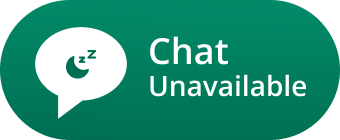
Mobile and online banking
Using your phone or your computer is probably part of your daily life, but are you using these devices to manage money?
People are increasingly using online and mobile banking for monitoring account activity, paying bills, or even for making purchases like a morning coffee or daily lunch. Explore how to use online and mobile banking securely to improve your financial habits and simplify daily financial tasks.
Why use mobile and online banking?
Anytime you access your bank account using the internet, you're using online banking. Mobile banking is when you access your bank account via a mobile device, such as a cell phone, smartphone, or tablet.
Here are a few reasons to try out mobile and online banking.
- It’s simple, flexible, and convenient. Accessing your personal financial information online is simple and quick, even when you are on-the-go. You can access your bank information, transfer money, and make payments wherever you have an internet connection — even on Sundays and holidays when financial institutions are typically closed.
- It’s secure. Online and mobile banking may be more secure than carrying around credit or debit cards, which have account numbers and magnetic strips on them, making it easier for them to be stolen or compromised. Make sure to password protect your phone and log out of all financial apps after using in case your phone is lost or stolen.
- It can improve your ability to monitor your finances. By checking your account balances or available credit in real time, you can avoid spending more than your available balance, which may result in pricey overdraft fees. Many mobile banking apps also have an optional feature that will send you notifications or alerts about the status of your account.
What is a mobile wallet and how can I use it?
Depending on which phone or device you use, you may have access to a mobile wallet, which virtually stores payment card information directly to your mobile device. You may use a mobile wallet to make purchases in stores or with merchants that are registered with the mobile wallet service provider.
Mobile wallets have four main features.
- They connect directly to a payment source, such as a prepaid card or bank account.
- They may be used for both in-person and online purchases.
- They are managed from multiple locations, usually from a phone, tablet, and/or computer.
- They may hold currency or other value – for example, many mobile wallets can hold coupons, event tickets, or loyalty program cards.
To use your mobile wallet to pay at a store, place it near a compatible terminal located at the checkout counter and either enter your personal identification number (PIN) or engage the phone's fingerprint reader (if it has one).
How to enroll in mobile and online banking services
Many banks and credit unions have websites with online banking options or offer mobile banking applications (apps) that can be downloaded to your mobile device. In general, you may follow these steps to enroll in mobile and online banking services.
- Talk to your current financial institution. The best way to know exactly what your mobile and online banking options are is to speak directly with a representative from your bank or credit union. They may point you to the products and services that are available to you, as well as let you know where to go to download their mobile application, if they have one.
- Download the app or visit the website. Based on your financial institution’s directions, download their official banking application, or visit their secure website to follow the enrollment instructions specific to your bank or credit union. In addition to your official banking application, many reputable mobile payment apps can be found in an app marketplace to assist you with online shopping, transferring money, monitoring your spending, and even investing.
- Set a secure passphrase. Be sure to create a strong passphrase (a mix of numbers, letters, and symbols) — and keep it secret! Do not use your birthday, maiden name, or other information that could be easily guessed or is searchable on the internet.
- Set up your mobile wallet. Determine if your phone or device has a mobile wallet option. If so, you may link one or more payment methods by adding your debit or credit card information to enable both online and in-store purchases.
8 best practices for staying secure
Some people are afraid of online banking because they are worried about cybersecurity. While this is a genuine concern, here are some helpful tips to help keep your accounts safe.
- Use a strong passphrase – and keep it secret: If you use a banking app on your mobile device, use a different, secure passphrase for your banking app than the one you use for your phone’s device lock.
- Always use a secure Internet connection: Website using SSL (Secure Socket Layer encryption) always show a web address that starts with “https://” which indicates that you are on a secure site.
- Verify who you are communicating with: If someone contacts you online and claims to work for your financial institution, contact your financial institution directly to be sure the person is actually a representative.
- Download from a trusted source: Download mobile banking apps from reputable sources, such as your bank’s website or a valid app marketplace.
- Use other resources to stay safe: Contact your bank and inquire about anti-malware software available for installation. Malware is software or viruses designed to damage or disable computers or systems.
- Regularly monitor your accounts and transactions: This way you can spot and report fraud to your bank right away.
- Know your rights: Financial institutions are required to use reasonable efforts to protect your privacy and the security of financial information. Certain Federal and state laws require the same of other businesses as well.
- Don’t forget to log out: Log out of all bank websites if you check your accounts on a public computer.
The information in this article was obtained from various sources not associated with Adirondack Bank. While we believe it to be reliable and accurate, we do not warrant the accuracy or reliability of the information. Adirondack Bank is not responsible for, and does not endorse or approve, either implicitly or explicitly, the information provided or the content of any third-party sites that might be hyperlinked from this page. The information is not intended to replace manuals, instructions or information provided by a manufacturer or the advice of a qualified professional, or to affect coverage under any applicable insurance policy. These suggestions are not a complete list of every loss control measure. Adirondack Bank makes no guarantees of results from use of this information.
Article written by EVERFI

